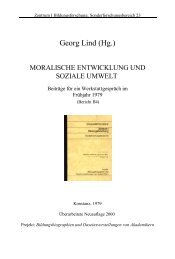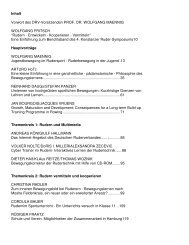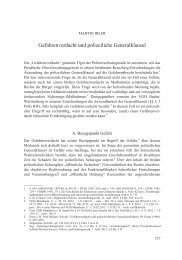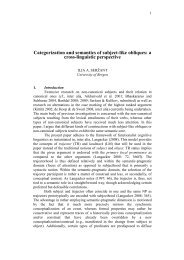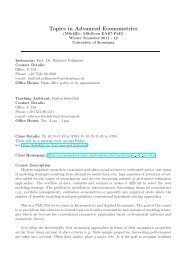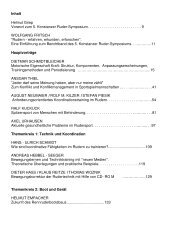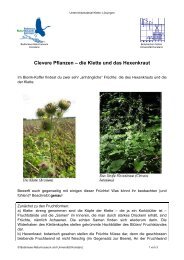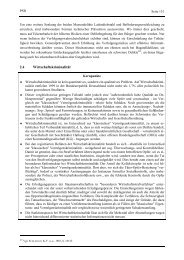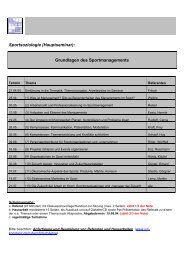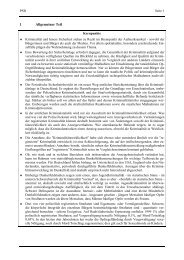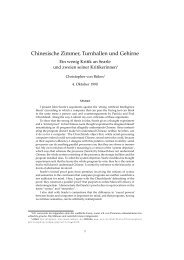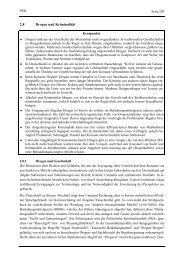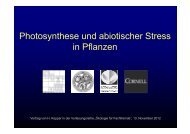Book of Abstracts Book of Abstracts - Universität Konstanz
Book of Abstracts Book of Abstracts - Universität Konstanz
Book of Abstracts Book of Abstracts - Universität Konstanz
Create successful ePaper yourself
Turn your PDF publications into a flip-book with our unique Google optimized e-Paper software.
B - 36<br />
76<br />
Rapid Alloying in binary Clusters: A Molecular Dynamics Study<br />
Y. Shimizu, T. Kobayashi, K. S. Ikeda and S. Sawada<br />
Ritsumeikan University, Kwansei Gakuin University<br />
Dynamics <strong>of</strong> surface atoms penetrating into microclusters is investigated in connection with<br />
the very rapid alloying (RA) in metal microclusters. RA was experimentally discovered by<br />
Yasuda and Mori for various types <strong>of</strong> nano-sized binary metal clusters. In short, RA is a<br />
manifestation <strong>of</strong> an unexpectedly fast diffusion <strong>of</strong> solute atoms into a host cluster, which is<br />
controlled by the magnitude <strong>of</strong> heat <strong>of</strong> solution and size <strong>of</strong> a cluster. Isothermal molecular<br />
dynamics simulation is done to investigate the mechanism <strong>of</strong> RA.<br />
In particular, we put our focus upon a cooperative interplay between atomic rearrangement<br />
along a cluster surface and that along radial direction <strong>of</strong> a cluster.<br />
Our results are summarized in the following two points. The dependence <strong>of</strong> the alloying and<br />
that <strong>of</strong> radial diffusion upon negative heat <strong>of</strong> solution are elucidated. It is found that dependency<br />
<strong>of</strong> the “alloying rate” upon the negative heat <strong>of</strong> solution and the size <strong>of</strong> clusters reproduced the<br />
qualitative features observed in the experiments. To quantify the dependence <strong>of</strong> atomic<br />
rearrangement dynamics upon temperature, the activation process <strong>of</strong> diffusive motion <strong>of</strong> atoms<br />
is analyzed.<br />
Although the activation energy <strong>of</strong> radial diffusion is about two times as large as that <strong>of</strong><br />
surface diffusion, there are circumstantial evidences that the latter process controls the former<br />
one. In that sense the rapid radial diffusion <strong>of</strong> a surface atom into a cluster is caused by the<br />
surface diffusion unlike the usual diffusion in bulk solid. In order to clarify the mechanism<br />
converting the active surface motion into the rapid radial diffusion, we numerically enumerate<br />
reaction paths. We found some candidates <strong>of</strong> characteristic collective motion which would<br />
effectively induce the rapid radial diffusion in terms <strong>of</strong> the surface activity.<br />
These two results suggest that surface atoms diffuse into the inside <strong>of</strong> the cluster due to the<br />
accumulation <strong>of</strong> active surface motion during long-time dynamics beyond a microsecond, even<br />
though the cluster is almost in solid-phase. Whilst diffusion due to the mechanism is crucial for<br />
the onset <strong>of</strong> RA, the same atomistic process is similarly expected not only for binary clusters,<br />
but also for monotonous ones. It leads us to an idea that a microcluster can be viewed as a<br />
dynamic material in which a transport <strong>of</strong> atoms between the surface area and the core region is<br />
continually induced in the course <strong>of</strong> long time scale.



